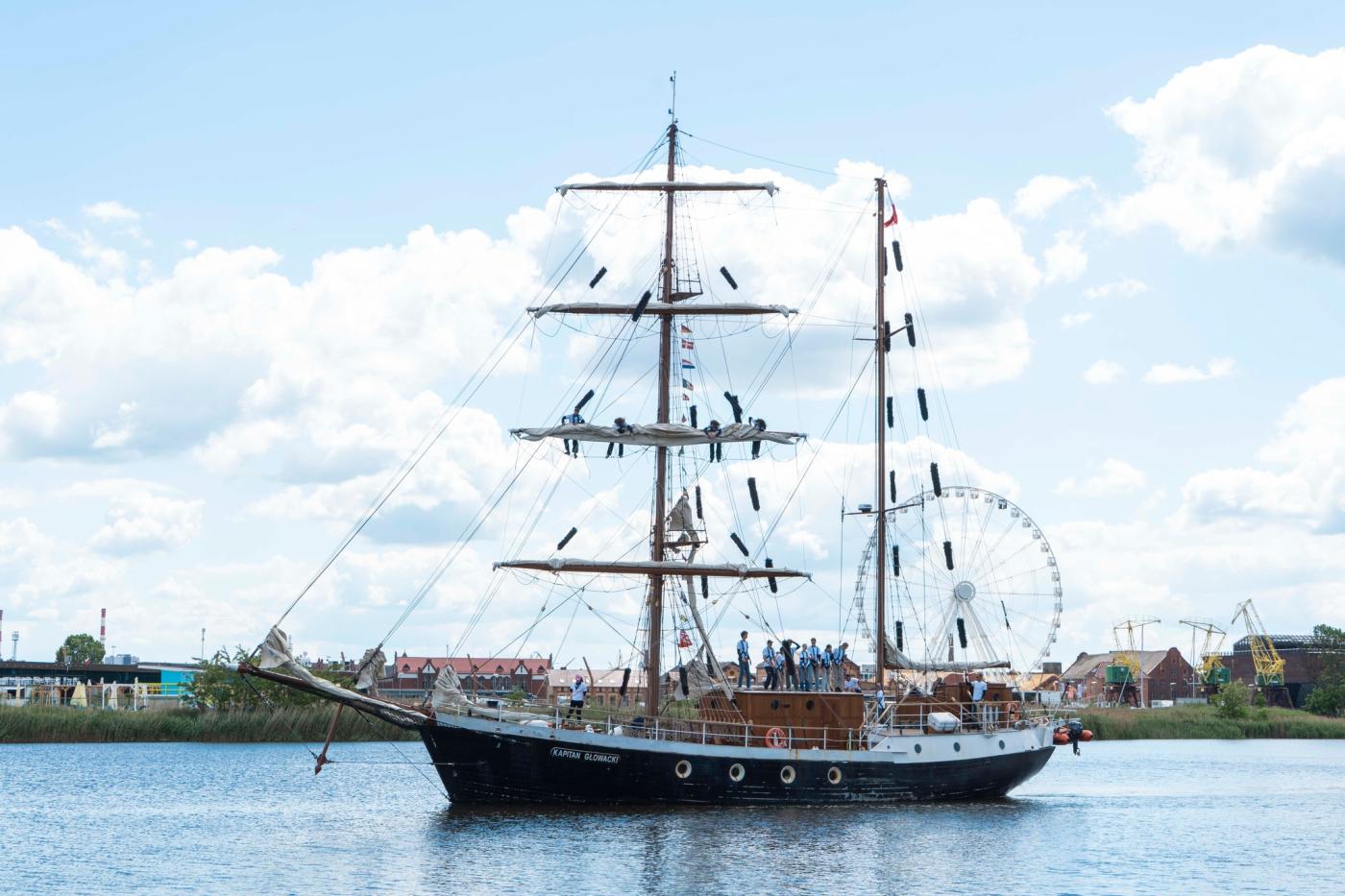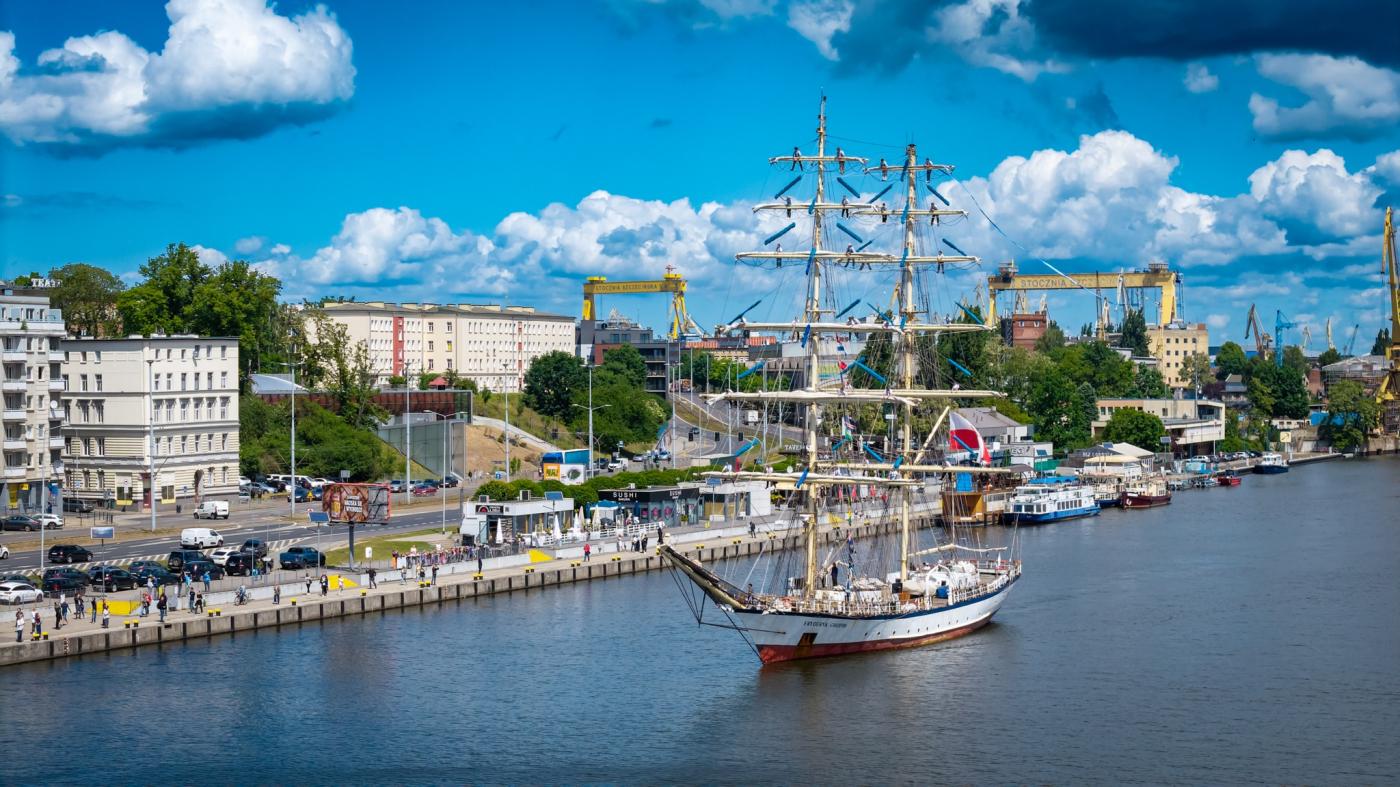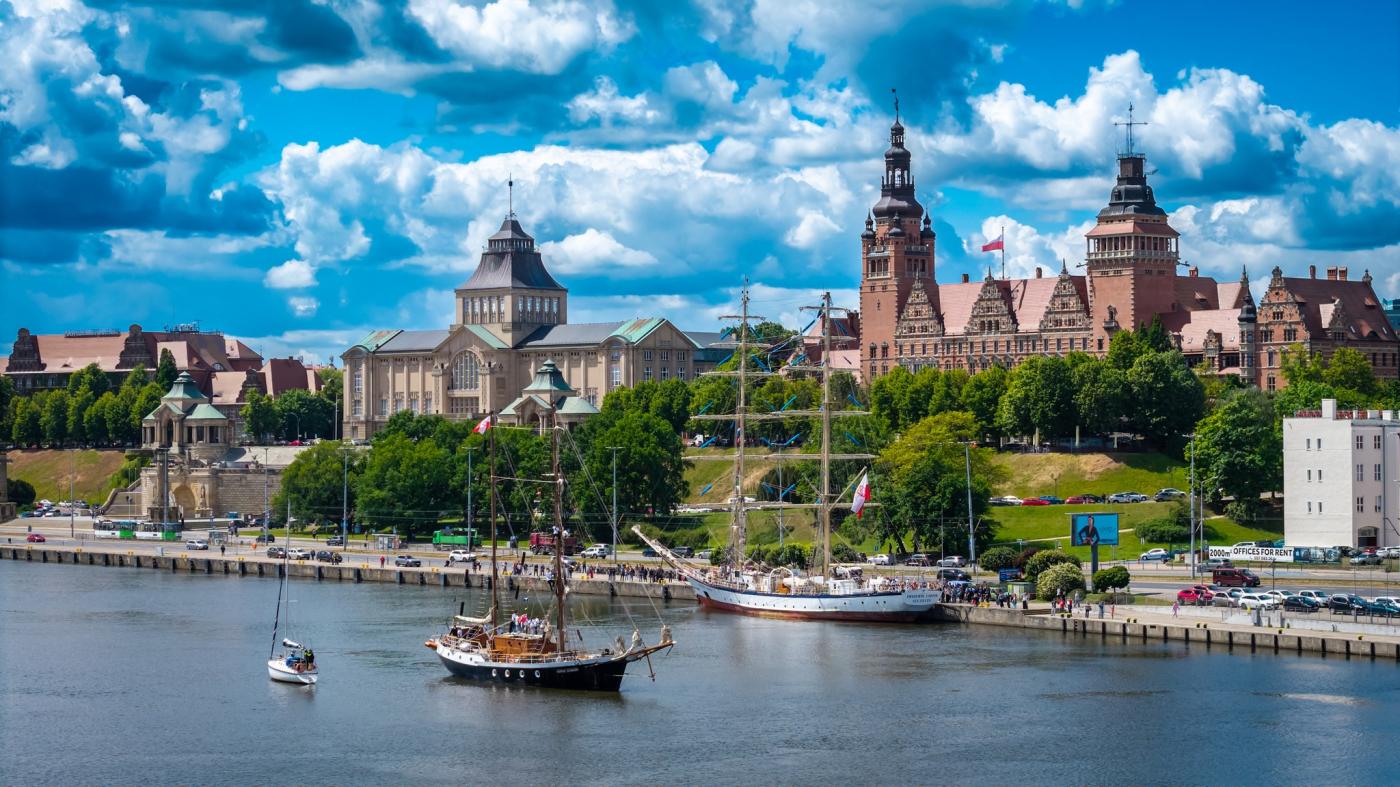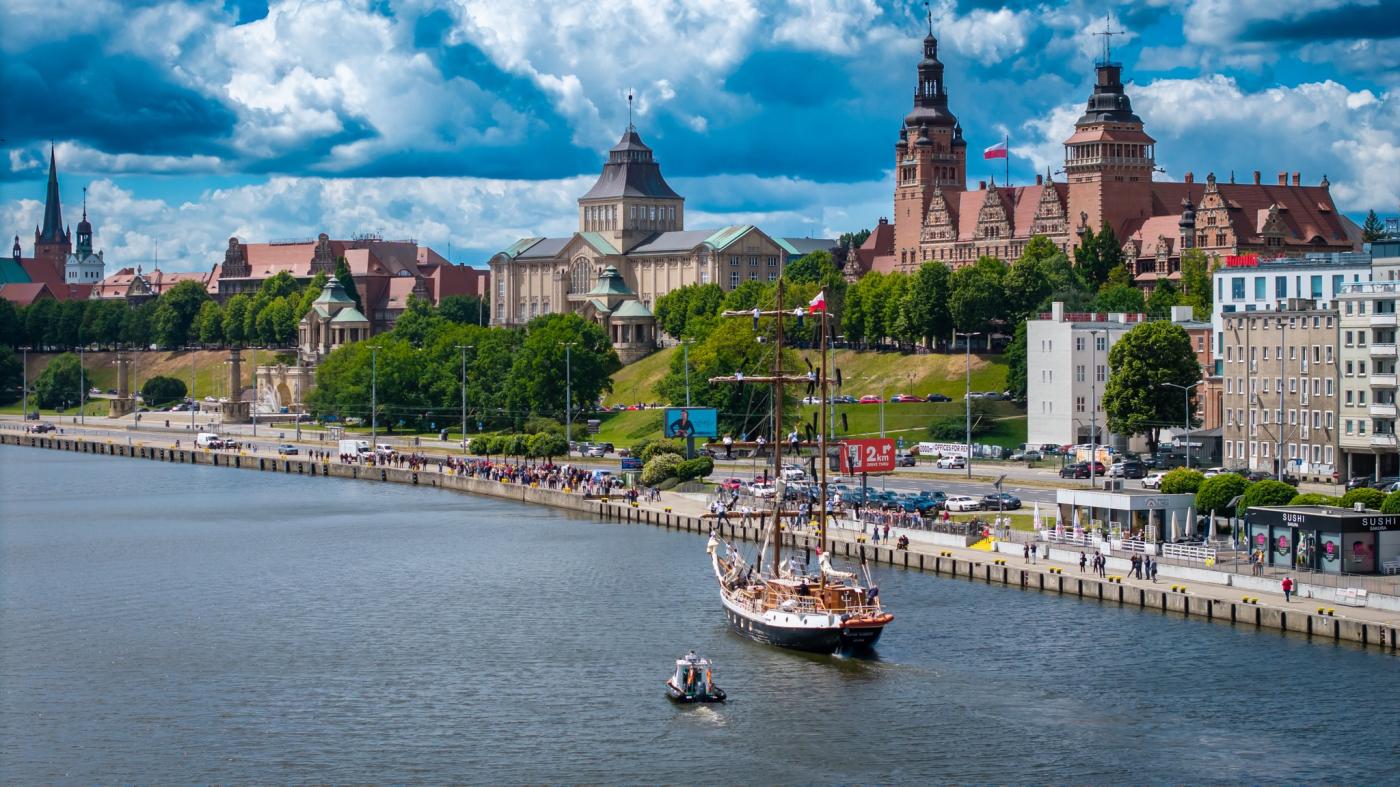Historic rendezvous in Szczecin: STS Fryderyk Chopin and STS Kapitan Głowacki close Blue School season
For the first time in history, Poland’s iconic tall ships STS Fryderyk Chopin and STS Kapitan Głowacki moored side by side at Szczecin’s Wały Chrobrego waterfront. The event marked the ceremonial end of the 2024/2025 Blue School under Sail season (Niebieska Szkoła pod Żaglami) – an educational sail training program for youth that combines traditional schooling with life at sea.
marine lifestyle news sailing30 may 2025 | 22:53 | Source: Gazeta Morska | Prepared by: Kamil Kusier | Print

fot. Miasto Szczecin
STS Fryderyk Chopin
Launched in 1992 and built in Gdańsk, STS Fryderyk Chopin is one of the largest brig-rigged sailing ships in the world. Designed by naval architect Zygmunt Choreń, the vessel was intended for sail training and youth education. With her impressive silhouette and advanced rigging, she often draws comparisons to 19th-century naval brigs, though she incorporates modern technology.
- Rig type: Brig (two-masted square-rigger)
- Length overall (LOA): 55.5 meters
- Beam: 8.5 meters
- Draft: 4.2 meters
- Sail area: approx. 1,200 m²
- Crew capacity: ~50 people (crew + trainees)
She has participated in numerous international tall ship races and is a frequent ambassador for Poland during maritime festivals.
STS Kapitan Głowacki
Originally launched in 1944 as a Kriegsmarine training vessel (Seeadler), the ship was acquired by Poland after WWII and extensively rebuilt for civilian sail training. Renamed Kapitan Głowacki in honor of Captain Konstanty Głowacki, she has since served generations of young sailors.
- Rig type: Full-rigged ship (three-masted)
- Length overall (LOA): 44.3 meters
- Beam: 8.0 meters
- Draft: 3.6 meters
- Sail area: approx. 1,000 m²
- Crew capacity: ~40 people
Her traditional rig, sturdy hull, and rich history make her a beloved and respected vessel in Poland’s sail training fleet.
The Blue School program
The Blue School under Sail (Niebieska Szkoła pod Żaglami) is an educational initiative that integrates traditional academic learning with the experience of seamanship. Each year, dozens of students join long-distance voyages aboard these ships, gaining not only maritime knowledge but also life skills such as teamwork, discipline, and resilience.
The mooring of both ships at Szczecin’s riverfront was more than just a photo opportunity – it symbolized the strength of Poland’s maritime education and the enduring role of sail training in shaping young minds.
Buy us a coffee, and we’ll invest in great maritime journalism! Support Gazeta Morska and help us sail forward – click here!
Kamil Kusier
redaktor naczelny
gallery








comments
Add the first comment
see also
Szczecin to reclaim its role as Poland’s gateway to the sea and sailing capital
Beach rescue corridor. OSP Jantar urges tourists to stay alert ahead of summer
Kołobrzeg Maritime City Days 2025 - a three-day celebration of seafaring heritage, culture and community
Humans have seen just 0.001% of the deep-sea floor. Scientists call for urgent exploration
43% of Poles plan may holiday trips, most choose mountains and seaside
Venice could be underwater by 2150. Polish cities like Gdańsk also at risk
Strong Polish showing at Trofeo Princesa Sofia - Palma regatta kicks off Olympic campaign towards LA 2028
New life for underwater treasures: Funding for the museum of underwater archaeology and Baltic fisheries in Łeba
Poles in the race for medals at the Trofeo Princesa Sofía World Cup in Mallorca
World cup in Mallorca opens the next Olympic cycle towards Los Angeles 2028
ADVERTISEMENT
ADVERTISEMENT